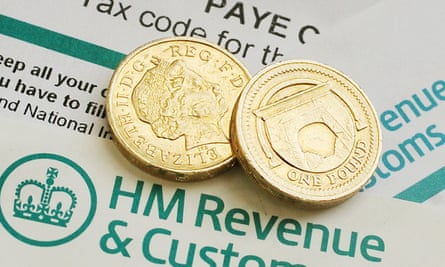Don’t expect much in the way of fireworks when the chancellor reveals his second budget on Wednesday lunchtime. Philip Hammond’s hands are manacled by Brexit uncertainty, public finances remain tight, and the outlook is worsening as forecasts for future economic growth are slimmed back. Yet, in a bid to woo younger voters, there is widespread anticipation of a package of giveaways to students and first-time buyers, while conventional taxpayers will be told that they are in line for a £12,500 personal allowance – though quite when remains to be seen.
Property
Stamp duty The tax you pay when buying a home is zero for the first £125,000, rising steeply above that. In a widely trailed measure, the chancellor is expected to cut it for first-time buyers, possibly to zero, although the devil is in the detail. Will there be age restrictions? Will it be a temporary, one-year giveaway? Widespread cuts, however, are out of the question – the Treasury earned a record £11.8bn from the duty in 2016-17.

Rents The housing market is broken, the government admitted earlier this year, so expect noises about fixing it. A better deal for the new army of renters is likely – with bans on letting agency fees and caps on rent deposits already announced. A further step many are expecting is tax incentives for landlords who guarantee tenancies of at least 12 months or longer.
Meanwhile, housing charity Shelter is calling for Hammond to unfreeze LHA – local housing allowance – which is too low for people to afford private rents in most areas, leaving families locked in temporary accommodation.
Help to buy This controversial programme, which accounts for more than a quarter of all new-build sales in the UK, is likely to be extended, even though critics say all it has done is raise prices and hand profits to the big developers. In October, the government said it would pour another £10bn into the scheme to keep it going to 2021, a measure Hammond is likely to re-announce, with builders pressing for an even bigger giveaway.
Landlords A hallmark of George Osborne’s later budgets was a gradual reduction in the tax reliefs and giveaways for investing in buy to let. Will Hammond follow a similar line with landlords – traditionally Conservative voters? The staged reduction of mortgage interest tax relief is cutting landlord profits, as has the removal of automatic “wear and tear” allowances, while new buyers must pay the 3% stamp duty levy on second homes. Meanwhile, lenders have become tougher on granting loans.
Landlords complain about a perfect storm – lending for buy to let has fallen steeply over the past year – but as they have withdrawn from the market, first-time buyers are no longer elbowed aside. A test of Hammond’s chancellorship will be how he balances the demands of landlords against priced-out generation rent.
Taxes
Income tax The first £11,500 you earn is free of income tax, called the “personal allowance” (though you do have to pay some national insurance on earnings below this). Increases in the personal allowance were the centrepiece of the Osborne years at the Treasury. Will Hammond continue?

In the spring budget he pledged to raise the allowance to £12,500 (there are separate arrangements for Scotland) by 2020, with the pledge reiterated in the June election manifesto. He has also promised to raise the higher-rate threshold – the point at which you start paying 40% tax – to £50,000 by 2020. That still gives him a small amount of leeway – conceivably he could freeze the personal allowance at £11,500 for 2018-19, then raise it in 2019-20 and still honour his pledge. What is almost certain is that there will be no change to the standard 20%/40%/45% tax rates.
National insurance NI was the calamity from the spring budget. Just one week after announcing an increase in contributions for the self-employed, Hammond was forced into a humiliating U-turn following a revolt by backbench MPs. The June election manifesto made virtually no mention of NI, freeing his hand to return to possibly high contributions by the self-employed, maybe under a scheme to simplify what is an excessively complex system.
VAT There will be no increase in VAT, which has stood at 20% since 2011 (when it went up from 17.5%). It is a fantastically lucrative part of government income, now hauling in £125bn a year compared to £175bn for income tax. Post-Brexit, chancellors will have greater flexibility to set reduced VAT rates (the EU requires that member states charge VAT, and only allows a few reduced rates), but given the state of the public finances, anything more than a cosmetic change is unlikely.
Diesel cars New taxes on diesel are a near-inevitability, although what form they will take is less clear. A rise in VAT would break the “no increase in VAT” pledge in the manifesto. But other levies could be introduced, such as £200 on sales, a variation in vehicle tax or an increase in the price of diesel.
Fuel duties These have been frozen for seven years and are expected to be again, though the chancellor could change the balance by raising the duty on diesel and cutting it on petrol.
Insurance taxes The insurance industry says customers are being milked by hikes in insurance premium tax, which has jumped from 6%-12% in less than 18 months, costing every household around £200. Further hikes are unlikely.

Sugar tax Osborne’s March 2016 budget surprise was a new levy that will add 6p to a can of Fanta or Sprite and 8p to a can of Coca-Cola or Pepsi, but is not set to be introduced until April. Hammond said he will go ahead with the tax, but has come under intense pressure from the drinks lobby.
Booze and fags In the spring budget the chancellor announced that all alcohol duty rates will rise in line with RPI from 13 March 2017, which put prices up by 3.9%, adding 8p to a bottle of wine. That suggests that there may not be another duty rise until next March – but the drinks industry says it is worried that, with two budgets in one year, the chancellor may “double dip” and once again apply the RPI rate – putting 9p on a bottle of prosecco just weeks before Christmas.
Pensions and retirement
Pension tax relief Successive governments have cut tax reliefs on pensions, limiting the annual amount that qualifies (now £40,000) while the “lifetime allowance” has fallen to £1m from £1.8m in 2010. Further cuts are possible, but unlikely. What has remained sacrosanct is the amount of relief you receive for each contribution. When lower-income workers pay into a pension it costs 80p for every £1, as the money goes in “gross” (ie, no tax paid). When a higher-income worker pays in it only costs 60p for every £1. One way to tackle this would be to have pension tax relief flattened, to say 25% or 30%. It is mooted nearly every budget – but after political fallout from Gordon Brown’s famous “raid” on pensions, Hammond may, like Osborne, steer clear, despite the huge sums it could raise.
State pension The June manifesto promised that the “triple lock” will remain in place until 2020. This guarantees that the basic state pension will rise each year by a minimum of either 2.5%, the rate of inflation, or average earnings growth – whichever is largest. The key figure is the September CPI rate, which was 3%, which means Hammond will have to announce a 3% rise in the state pension, the biggest since 2012. This suggests that the basic state pension will go up from £122.30 to £125.97 a week, while the new state pension (if you have a full NI contributions record) will rise from £159.55 to £164.34.
After 2020 the double lock will come in, which is likely to mean the 2.5% minimum will go, with future increases based on rises in earnings or inflation.
Winter fuel allowance This is £200, rising to £300 for the over-80s, paid to everyone in receipt of a state pension. But the Conservatives said in their manifesto that it will be means-tested, and the budget may detail when and how.
Young people
Student loans Students pay up to 6.1% interest, far above the 0.5% base rate set by the Bank of England. With many leaving university with loans of £50,000 or more, Britain’s £100bn student loan problem is getting worse every year.

Various options have been mooted to tackle this. One would be to raise the threshold where students have to begin repaying the loans, which starts on earnings above £21,000. But more likely is a cut to the interest rate. Currently, while a student is still at university the formula for interest is an astonishingly high RPI plus 3% (currently putting it at 6.1%). After graduation the rate applied is more complicated – currently 3% if you earn less than £21,000, rising to 6.1% if your salary is above £41,000. The budget could see this formula swept away and replaced with a simpler, lower interest rate.
Railcards Continuing the theme of a budget for young people, a small measure is likely to be a new Railcard for 26-30-year-olds. The digital-only “millennial card” is expected to offer benefits similar to the current 18-25 Railcard, giving a third off most rail and tube fares, at a purchase price of £30.

Comments (…)
Sign in or create your Guardian account to join the discussion